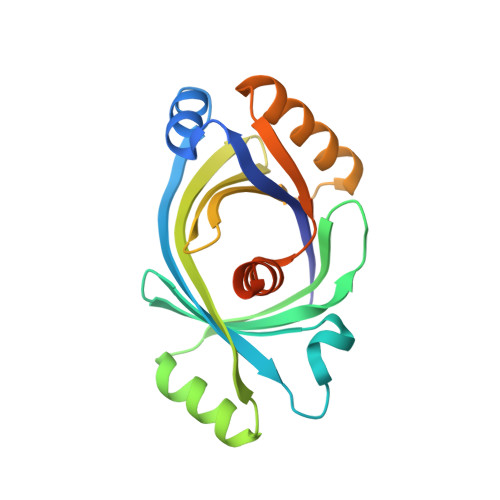The archaeal triphosphate tunnel metalloenzyme SaTTM defines structural determinants for the diverse activities in the CYTH protein family.
Vogt, M.S., Ngouoko Nguepbeu, R.R., Mohr, M.K.F., Albers, S.V., Essen, L.O., Banerjee, A.(2021) J Biological Chem 297: 100820-100820
- PubMed: 34029589
- DOI: https://doi.org/10.1016/j.jbc.2021.100820
- Primary Citation of Related Structures:
7NS8, 7NS9, 7NSA, 7NSD, 7NSF, 7OA2 - PubMed Abstract:
CYTH proteins make up a large superfamily that is conserved in all three domains of life. These enzymes have a triphosphate tunnel metalloenzyme (TTM) fold, which typically results in phosphatase functions, e.g., RNA triphosphatase, inorganic polyphosphatase, or thiamine triphosphatase. Some CYTH orthologs cyclize nucleotide triphosphates to 3',5'-cyclic nucleotides. So far, archaeal CYTH proteins have been annotated as adenylyl cyclases, although experimental evidence to support these annotations is lacking. To address this gap, we characterized a CYTH ortholog, SaTTM, from the crenarchaeote Sulfolobus acidocaldarius. Our in silico studies derived ten major subclasses within the CYTH family implying a close relationship between these archaeal CYTH enzymes and class IV adenylyl cyclases. However, initial biochemical characterization reveals inability of SaTTM to produce any cyclic nucleotides. Instead, our structural and functional analyses show a classical TTM behavior, i.e., triphosphatase activity, where pyrophosphate causes product inhibition. The Ca 2+ -inhibited Michaelis complex indicates a two-metal-ion reaction mechanism analogous to other TTMs. Cocrystal structures of SaTTM further reveal conformational dynamics in SaTTM that suggest feedback inhibition in TTMs due to tunnel closure in the product state. These structural insights combined with further sequence similarity network-based in silico analyses provide a firm molecular basis for distinguishing CYTH orthologs with phosphatase activities from class IV adenylyl cyclases.
- Department of Chemistry, Philipps-Universität Marburg, Marburg, Germany.
Organizational Affiliation:




















